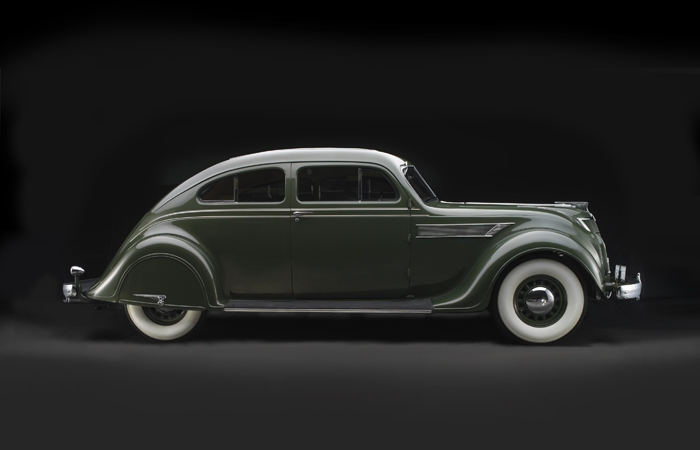
1935 Chrysler Imperial Model C-2 Airflow Coupe
Collection of John J. and Nora L. Heimerl, Suffolk, VA
When the radical Airflow model was first released in 1934, the Chrysler Corporation of Detroit, Michigan, was only ten years old. One of the young company’s strengths was engineering excellence, an outgrowth of Walter P. Chrysler’s early experience as a railroad master mechanic.
Chryslers and DeSotos tended to be rather conventional, but this changed with the introduction of the Airflow in 1934. The man behind this new direction was engineer Carl Breer. He was inspired by a formation of military airplanes, which caused him to consider wind resistance and air pressure, and led him to consult with aviation pioneer Orville Wright.
Wind tunnel testing revealed that the typical, square-shaped 1930s automobile was more aerodynamically efficient when driven backwards, a revelation that led directly to the Airflow line. Breer focused on aerodynamics and had his colleague Fred Zeder design a strong unibody structure.
Snub-nosed, and with the passengers positioned in front of the rear axle, the bold new Airflow Chryslers and Desotos lacked the long hoods and sweeping fenders of conventional rivals. A lavish chrome waterfall grille, side strakes, skirted fenders, multi-bar bumpers and tubular chrome-plated seat frames showed Art Deco influences. The new Airflow was miles ahead in safety and strength, but its unconventional design failed to gain much public acceptance.
This 1935 Imperial C-2 Coupe is one of ten known to survive of just 200 built. The Airflow is perhaps the best example of Art Deco style in the American idiom. This rare C-2 Coupe is a brilliantly conceived and well-executed machine that was simply too modern for its time.
Sponsored by: Judy and Steve Turner
